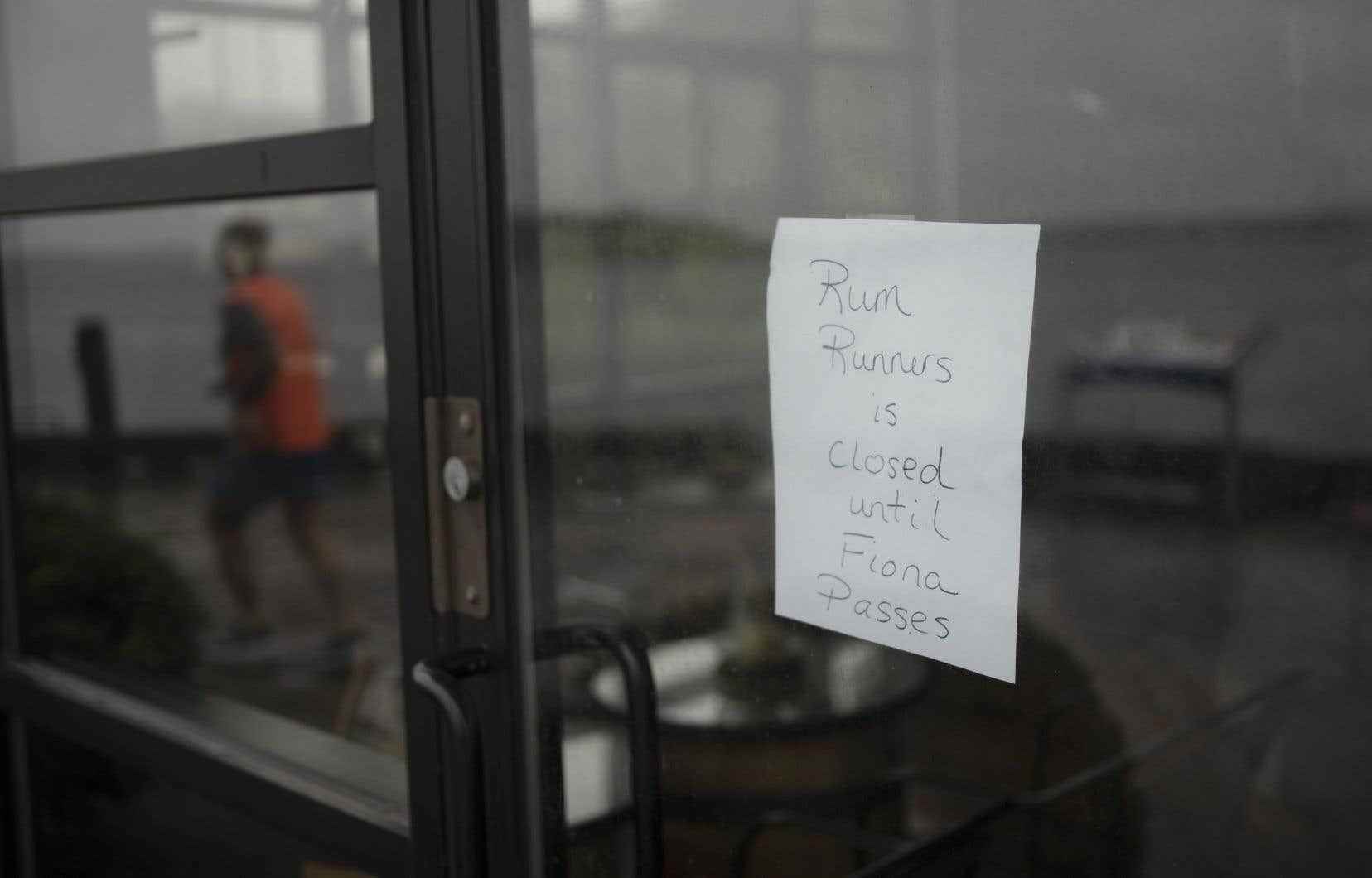The Îles-de-la-Madeleine in particular, but also eastern Gaspésie and the Lower North Shore must prepare for the worst, while the hurricane Fiona is heading towards these regions and is shaping up to be one of the most severe storms in history in these regions.
Its effects are already being felt, but the most intense period will begin in the night from Friday to Saturday and will last until late Saturday evening for the Îles-de-la-Madeleine and the eastern tip of Gaspésie, so that the full impact on the Lower North Shore will be felt from Saturday morning to Sunday morning.
Environment Canada meteorologists provided an update midday Friday, explaining that the hurricane is moving slowly, which is worsening its impacts.
“Dangerous” conditions in the Magdalen Islands
The Islands, which are right in the middle of the trajectory, must be prepared to face winds of 100 to 160 kilometers per hour and to receive 75 to 125 millimeters of rain in total, which therefore includes the rain has already fallen since Thursday evening. A storm tide will be added to the set on Saturday morning.
The words of meteorologist Jean-Philippe Bégin were blood-curdling.
“For the Îles-de-la-Madeleine, the conditions will worsen to become execrable and even dangerous during the night. The worst, for the Îles-de-la-Madeleine, is between tonight and late Saturday evening, so around 24 hours,” he said.
“Roads near the coast that are exposed to northerly winds are expected to be particularly vulnerable. We could have road slumps. We also expect widespread power outages and problems that could last for several days,” he added.
Environment Canada also warns Madelinots, Gaspésiens and North Shores to prepare an emergency kit for 72 hours.
“All preparations must be completed before tonight in anticipation of the storm,” warned his colleague, meteorologist Bob Robichaud.
On the eastern tip of Gaspésie, a total of 50 millimeters of rain is forecast and winds of 60 to 90 km/h with peaks over 100 km/h. Jean-Philippe Bégin warns that with the leaves in the trees, they will be much more vulnerable to uprooting than in the fall or winter. “With all the leaves in the trees, we expect it to have a veil effect, that the wind has a lot of influence in the trees and, therefore, creates uprooting of trees, broken branches. So we expect a lot of power outages in that area,” he explained.
The rest of the Gaspé Peninsula will not be spared and can expect to receive 30 to 50 millimeters of rain accompanied by strong winds, just like the Lower North Shore, which must also prepare to absorb some 50 millimeters of rain.
In all three regions, storm tides between Saturday morning and Sunday morning could be 1.8 to 2.4 meters higher.
Nova Scotia and Prince Edward Island in the Eye of the Storm
The Atlantic provinces, particularly Cape Breton Island in Nova Scotia and Prince Edward Island, which lie directly in the center of the projected passage of Fionashould also expect to be hit very hard, while there is talk of torrential rains of up to 200 millimeters and winds that can exceed 160 km / h.
Jean-Philippe Bégin and his colleague Bob Robichaud do not hesitate to speak of a historic storm, in particular because of the size of Fiona and the fact that it moves slowly, when the time comes to compare with Dorianin 2019, and John in 2003.
” John was a real hurricane when it hit Nova Scotia, but really in the Halifax area. The very strong winds did not cover a large area. It was really the city of Halifax and the areas just east and north,” said Bob Robichaud.
” Dorian, This is an other story. The winds were not as strong, but the area of the storm covered the entire province of Nova Scotia, all of Prince Edward Island and areas west of Newfoundland and areas in southeastern New Brunswick. With Fionait will be even stronger than Dorian, but about the same size. »
And above all, added Mr. Robichaud, “it’s going to be a good 12 hours of extreme winds. It’s very long. Usually we have hurricane conditions that could last an hour, two hours, sometimes six hours. »
François Legault will go to the Magdalen Islands
Campaigning in Laval on Friday morning, Premier François Legault did not hesitate to call on the citizens of the regions that will be affected to be cautious. “There is a significant risk. Prepare for the worst and we’ll hope it goes well. It is important to follow the instructions. »
Mr. Legault announced that he will go to the Magdalen Islands when Fiona has passed and specified that the various ministries involved in the management of natural disasters, in particular that of Public Security, as well as Hydro-Québec are on high alert and ready to intervene as soon as necessary.
For his part, Prime Minister Justin Trudeau expressed concern about the situation. He promised to offer any federal resources that may be required by the provinces to deal with the aftermath of the storm. He also invited the populations of the east coast to be cautious and to respect the instructions.
